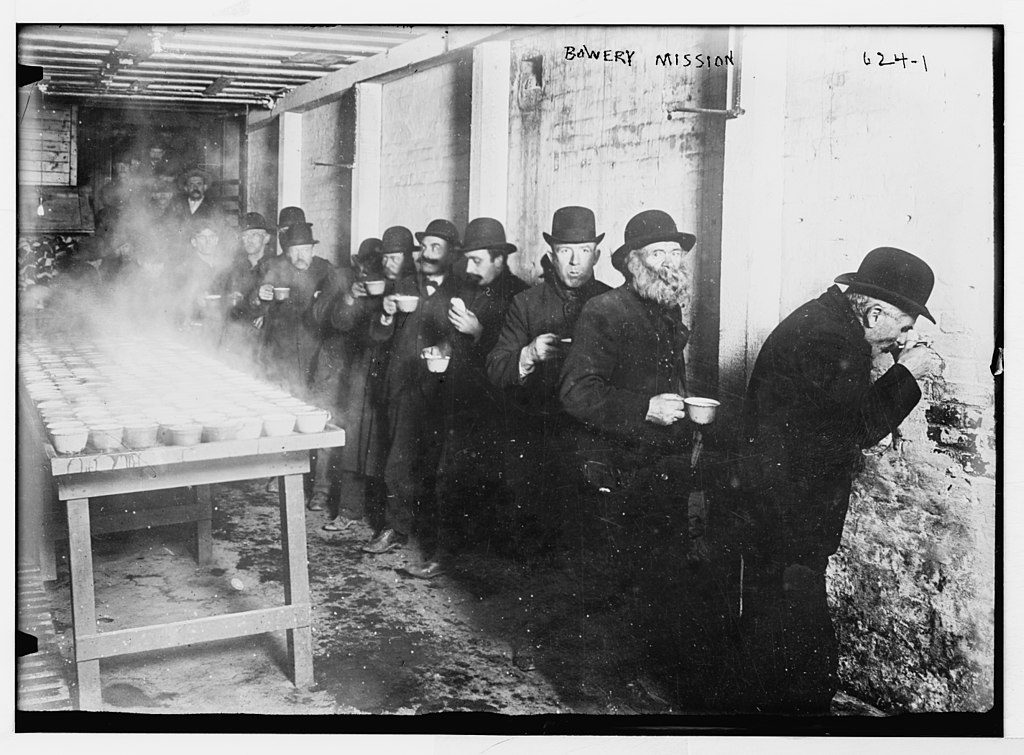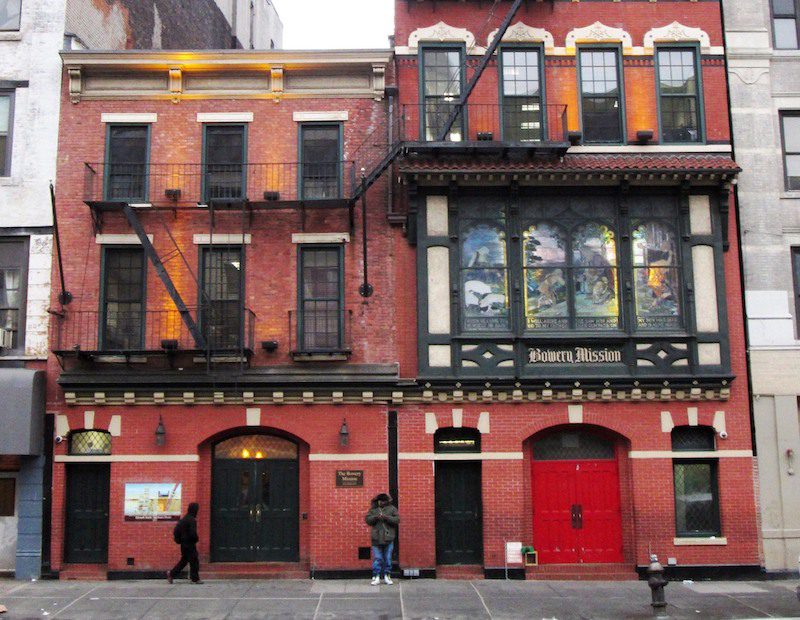The Street Where New York Hits Rock Bottom

Bowery Mission: Grit and Grace on Manhattan’s Oldest Street, Jason Storbakken, Plough Publishing House, 176 pages.
For nearly 200 years, as New York City’s northward march swallowed up Manhattan Island, the Bowery has been one of the places where New Yorkers and a selection of visitors hit rock bottom. But in 1879, the Rev. Albert Gleason Ruliffson, his wife Ellen Dorchester, and some others founded the Bowery Mission; their aim was to bring God and a little help to the drunks, petty criminals, and mentally ill of the neighborhood.
The story of the Mission, and the people it has served for 140 years, is the subject of the new book Bowery Mission: Grit and Grace on Manhattan’s Oldest Street, written by former Bowery Mission chapel director Jason Storbakken. The book is short, and the prose does exactly as much as it needs to, moving swiftly on. Though I hoped for a somewhat longer book, with more details about the neighborhood and the people of this place—including more historic photographs—there are likely plenty of free resources for those looking.
Ultimately, Bowery Mission is about this longtime institution’s calling to preach the Gospel through serving the poor, even though societal upheavals. The huge changes in American urban society and life in general since the 1920s have tended to leave religious congregations spatially dispersed, as well as disconnected from the physical neighborhood of their churches. This has a real impact on neighborhoods, as I wrote back in 2017, with churches providing meeting space, volunteers and simply being “third spaces” where people meet and communities form. Many of those functions cease and connections fail when the congregation no longer lives nearby.
But the Bowery Mission has retained that intimate connection to its neighborhood and people. The poor and the homeless continue to make their way to the Bowery and the Mission, with its food, shelter, resources and welcoming people. Even as the neighborhood has begun to change around the Mission.

One of the most curious things about neighborhoods is that uses tend to persist over time. The Bowery was New York’s skid row for over a century while the Five Points and Tenderloin districts had to be largely demolished and redeveloped before they changed.
The latest sustained wave of gentrification has done what urban renewal never could and transformed impoverished, run-down neighborhoods into wealthy ones full of new or newly refurbished apartment and condo buildings. Where the Bowery Mission’s neighbors were once boarding houses, flophouses, dive bars, and brothels, there is now the seven-story New Museum of Contemporary Art and an eight-story AvalonBay luxury apartment complex with a Whole Foods on the ground floor.
Urbanists, economists, and statisticians continue to debate the impacts of new construction and in-migration of wealthier, whiter and white-collar workers on cities—and especially poorer residents.
While New York’s down-and-out have gravitated toward the Bowery over the decades, they haven’t all been materially impoverished. According to the book, after the death of his wife in 1910 department store owner JC Penney was distraught. He contemplated suicide before coming across the Bowery Mission. The Mission gave him faith and hope again and he became one of its most important financial backers.
The Bowery Mission continues these efforts today, providing food and shelter to hundreds of people every night, but also running recovery programs to help people in their fights against drugs and alcohol. Most impressively, it continues as a Christian institution, when similar organizations have secularized over the years. Preaching the Gospel continues to be the focus and purpose of the Mission, even as the means have changed: the poet Fanny Crosby was associated with the Mission from 1881 and wrote numerous hymns; from 1895 until its dissolution in 2006 the Mission was owned by The Christian Herald, an evangelical magazine; in the 1930s superintendent Charles St John broadcast chapel services and the stories of Mission clients on a CBS radio show. Storbakken gave out cameras to let the clients document their lives and arranged for the photos to be displayed in the nearby New Museum.
Its story is a reminder, not only of the fact that we will always have the poor with us, but also that no matter the prosperity of the city, people will search for transcendence.
Matthew Robare is a freelance journalist based in Boston.